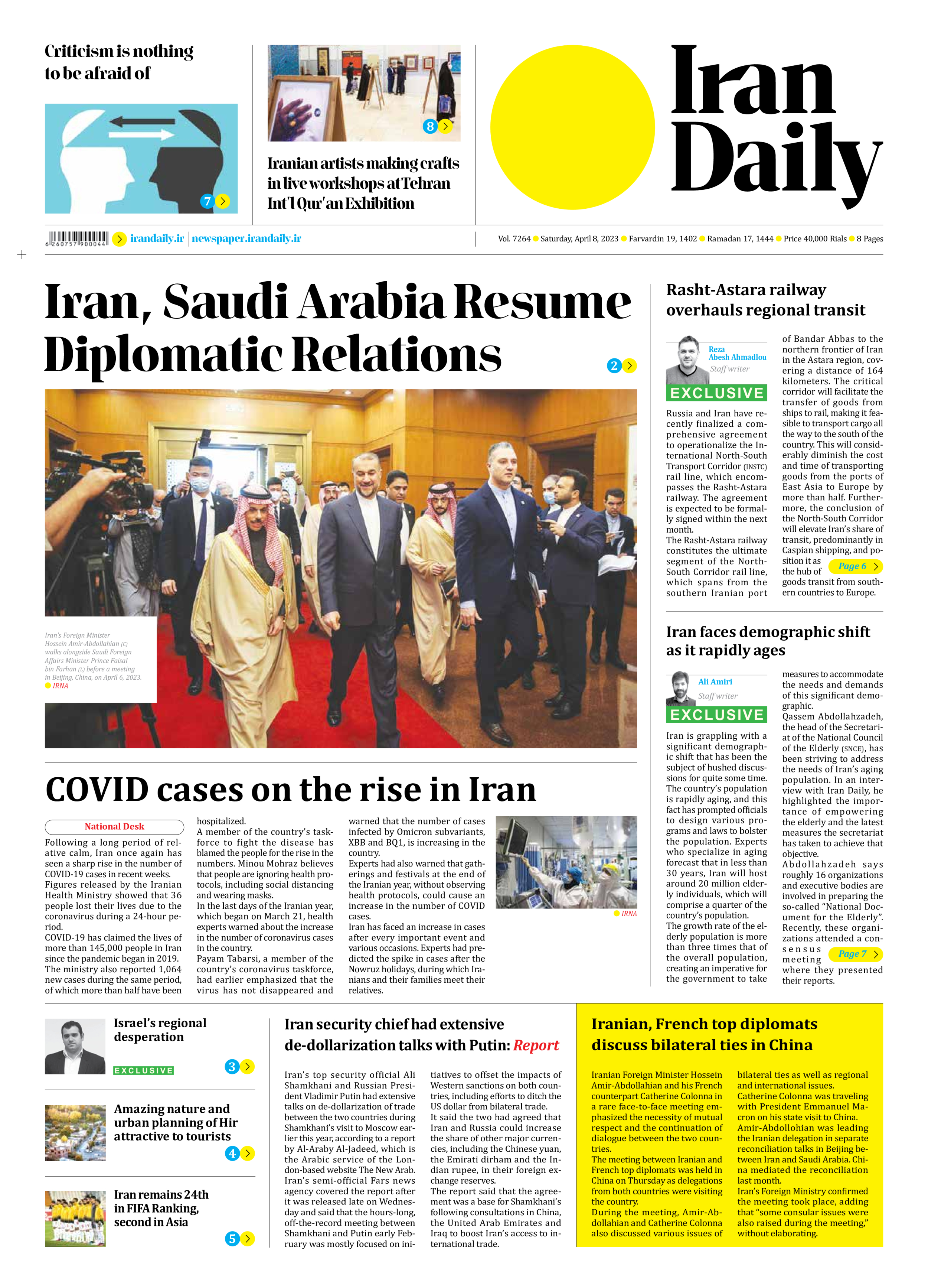
Iran faces demographic shift as it rapidly ages
Ali Amiri
Staff writer
Iran is grappling with a significant demographic shift that has been the subject of hushed discussions for quite some time. The country’s population is rapidly aging, and this fact has prompted officials to design various programs and laws to bolster the population. Experts who specialize in aging forecast that in less than 30 years, Iran will host around 20 million elderly individuals, which will comprise a quarter of the country’s population.
The growth rate of the elderly population is more than three times that of the overall population, creating an imperative for the government to take measures to accommodate the needs and demands of this significant demographic.
Qassem Abdollahzadeh, the head of the Secretariat of the National Council of the Elderly (SNCE), has been striving to address the needs of Iran’s aging population. In an interview with Iran Daily, he highlighted the importance of empowering the elderly and the latest measures the secretariat has taken to achieve that objective.
Abdollahzadeh says roughly 16 organizations and executive bodies are involved in preparing the so-called “National Document for the Elderly”. Recently, these organizations attended a consensus meeting where they presented their reports.
However, given the sensitivity of the issue, the presence of higher officials at the ministerial level is imperative. Without their participation in the primary meeting, nothing substantive can be accomplished.
Abdollahzadeh believes that the National Document for the Elderly has ambitious goals. The document defines six primary objectives, 17 strategies, and 130 executive policies that institutions must execute. However, the implementation of each policy and strategy requires money. Since the secretariat is based in the country’s welfare organization, it lacks an independent budget, and no credit line has been considered for it.
Iran’s aging population presents significant challenges for the country including increased healthcare demand, social services, and a reduced workforce. The government must take measures to support this population and ensure that they receive the necessary care and services. However, this requires a national effort that extends beyond the SNCE. All organizations must be involved and provide the necessary budget and resources to implement the policies and strategies outlined in the National Document for the Elderly.
Abdollahzadeh says working in the field of aging and even adapting to aging requires cultural development. People should accept that they will most likely spend a decade of their life being old and senile, and this is an inescapable reality. Therefore, every element of society must be prepared for some of its members to get old because old age is a time for rest for individuals. To lay the groundwork in various areas of society, it is suggested to seek the valuable counsel of the elderly.
It is worth remembering that an individual who has typically labored for 30 years and is over 60 years old can no longer engage in highly productive or strenuous activities. In old age, individuals want to see the fruit of their years of labor, and the only way to achieve this is by strengthening the country’s social welfare system. All citizens should learn from a young age to save and purchase various insurances, as they can later utilize supplementary and disability insurances in their old age.
Iran’s aging population is an urgent issue that demands immediate attention. The government must act to address the needs of this population and guarantee that they receive the necessary care and services. By doing so, the country can ensure that its elderly citizens receive the respect and dignity they deserve in their old age.
Moreover, it is essential to raise awareness and educate the public about the challenges facing the elderly and the need for a cultural change in the way we view aging. The stigmatization of aging and the elderly is a global problem, and Iran is no exception.
Ageism is a pervasive issue that can have serious consequences for the health and well-being of older adults. By promoting a culture of respect and inclusion for the elderly, Iran can set an example for other nations and contribute to a more equitable and compassionate world.
The challenges facing Iran’s aging population are complex and multifaceted, but by working together and taking proactive steps to address them, the country can ensure that its elderly citizens can live their later years feeling dignified, secure, and fulfilled.







